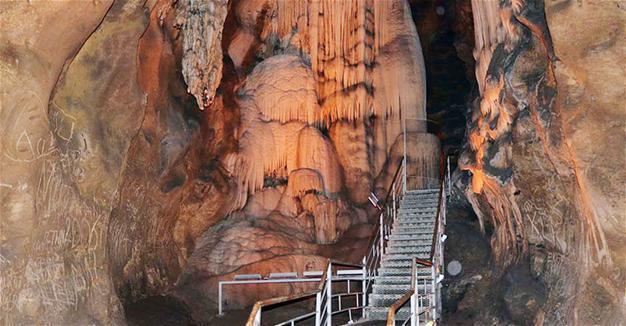İncirliin cave offers ancient life traces
MUĞLA
 Ongoing excavations at the İncirliin Cave in the southwestern Turkish province of Muğla’s Milas district have unearthed human bones and ceramic pieces dating back to the prehistoric and ancient ages.
Ongoing excavations at the İncirliin Cave in the southwestern Turkish province of Muğla’s Milas district have unearthed human bones and ceramic pieces dating back to the prehistoric and ancient ages. The cave, which has been declared a first degree archaeological site by the Muğla Cultural and Natural Heritage Preservation Board, is located in Milas’ Gökçeler neighborhood.
Speaking to Doğan News Agency, Milas District Governor Fuat Gürel said the 345-meter long cave was home to huge stalactites, stalagmites, and stalactite pools.
Gürel said works started last year to eventually open the cave to tourism, with walking routes and lighting placed in the cave.
Professor Adnan Diler, the head of the Archaeology Department at Muğla Sıtkı Koçman University, said the archaeological and drilling works at İncirliin had “scientific importance.”
“We only have a little knowledge of deep history in the Karia region, particularly in these fields close to the coast. As the result of excavations and surface surveys carried out in the coalfield in this region, we know there was a rich settlement in both the coastal and interior regions in the Bronze Age between 3100 and 1200 BC. But we don’t have much information about the previous period, the Neolithic and Chalcolithic ages. A place like İncirliin may provide us with information,” Diler said.
“The goal of our work is to prevent destruction here and get more information. We have not yet published a report but the finds here reveal there was a settlement here in the late Chalcolithic age. Most probably, it will date back to earlier and shed light on the unknown history of Karia. That is why works are very important in this region,” he added.
Tourist attraction
Following the construction of a viewing terrace, walking routes, lighting and security systems, a 155-meter section of the İnciriiln Cave in the Gökçeler Canyon opened to visitors in April this year.
The cave, which catches the eye for its stalactite pools and stalagmites, is also a natural living environment for bats.
The cave is 3-10 meters in width and 2-20 meters in height, drawing foreign and local visitors as well as photography artists.
















